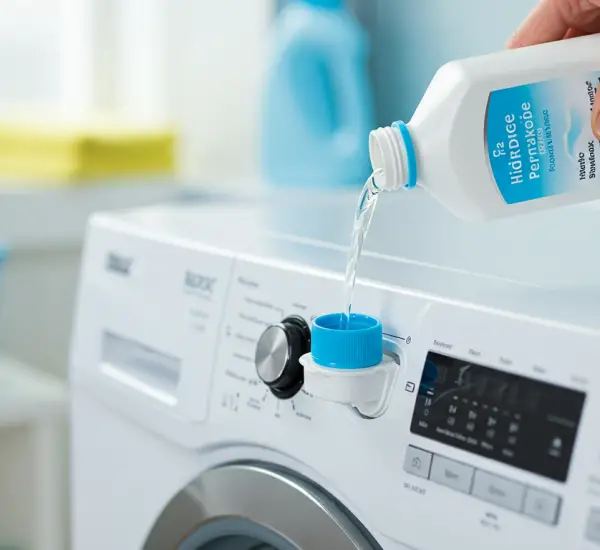The energy crisis continues to hit Italian families hard, with skyrocketing utility bills weighing heavily on household budgets. Every month, more and more people struggle to make ends meet, as everything — from groceries to electricity — has become noticeably more expensive. For many, the “caro bollette,” or high bill season, feels like a real blow, forcing them to look for creative ways to reduce consumption without sacrificing comfort.
While it’s true that saving energy is essential, many people are going about it the wrong way — giving up basic necessities like heating or avoiding the use of household appliances altogether. In reality, with just a few smart adjustments, it’s possible to lower your energy costs significantly without freezing at home or living in the dark. The secret lies in using your appliances during specific time slots when electricity costs less.
The Wrong Way to Save Energy
Across the country, families are finding ways to cope with rising expenses. Some people drive less or stop using their cars altogether to cut down on fuel costs, even suspending insurance when possible. Others rely on public transportation to save money, even if it means sacrificing independence and convenience.
Inside the home, many have taken even more drastic measures — such as avoiding heating or limiting appliance use — believing this is the only way to lower their bills. Unfortunately, these extreme sacrifices don’t actually translate into meaningful savings. Spending the entire day or night in a cold house isn’t just uncomfortable; it’s also unnecessary.
You don’t need to give up warmth or comfort to save money. Instead, by learning how to manage energy usage smartly and turning on your devices at the right time of day, you can enjoy a warm, well-lit home while still keeping your bills under control.
Small Habits, Big Waste
Many households unknowingly waste energy due to small, seemingly insignificant habits. For example, leaving electronic devices on standby — even when they’re not in use — consumes more electricity than most people realize. The little red light on your television, radio, or stereo, as well as phone chargers left plugged into the wall, all continue to draw power.
It may seem trivial, but these tiny, constant energy drains add up over time. At the end of the month, they can increase your bill by several euros — money that could have easily been saved simply by unplugging devices when not in use.
So before turning off your heating system for good, start by addressing these smaller but persistent sources of waste. It’s a much easier and more effective first step toward saving energy.
Understanding Electricity Time Bands
In Italy, most electricity contracts are biorariali, or “two-rate plans.” This means that the cost of electricity changes depending on the time of day and the day of the week. Knowing how these time bands — called F1, F2, and F3 — work can make a huge difference in your monthly bill.
-
F1 (Peak Hours): Monday to Friday, from 8:00 a.m. to 7:00 p.m. — This is the most expensive time to use electricity, as energy demand is at its highest.
-
F2 (Intermediate Hours): Monday to Friday, from 7:00 to 8:00 a.m. and 7:00 to 11:00 p.m. — Costs are slightly lower than during peak hours.
-
F3 (Off-Peak Hours): Nights (from 11:00 p.m. to 7:00 a.m.) and all day on Saturdays, Sundays, and public holidays — This is the best time to use energy, as it’s when electricity costs the least.
Each energy company applies these bands in the same way, regardless of which provider you’re with. So, if you schedule your energy-intensive activities — like laundry, dishwashing, or heating — during the F3 hours, you can significantly reduce your bill.
When to Use Heating and Appliances
If you want to cut energy costs without giving up comfort, plan your home activities strategically. For example, turning on your heating system in the evening or early morning — when rates are lowest — allows you to warm your house efficiently and affordably.
The same logic applies to your major appliances. Using your washing machine, dryer, or dishwasher during off-peak hours can lead to noticeable savings over time. Some newer models even have a delayed start function, allowing you to program them to run automatically at night when electricity is cheaper.
Avoid These Common Mistakes
Even if you follow the right time slots, some habits can still sabotage your savings. One of the most common mistakes is running appliances when they’re only half full. Whether it’s your washing machine, dryer, or dishwasher, always make sure they are loaded to capacity before starting a cycle. Running multiple small loads wastes both electricity and water, driving your bills higher for no reason.
Another simple but often overlooked tip is to switch to LED light bulbs. They consume far less power than traditional bulbs and last much longer. While the initial cost may be slightly higher, LEDs pay for themselves quickly in terms of energy efficiency.
A Practical Approach to Real Savings
It’s important to remember that saving on energy bills doesn’t mean giving up modern comforts. The key is awareness — understanding how and when to use your household devices in a smarter, more efficient way.
Here are a few final tips to help keep your consumption under control:
-
Unplug idle electronics: Don’t leave chargers, TVs, or computers plugged in when not in use.
-
Use timers or smart plugs: Automate your appliance use to align with off-peak hours.
-
Optimize heating: Set your thermostat to around 20–21°C (68–70°F) — comfortable and efficient.
-
Close doors in unused rooms: This prevents heat loss and reduces the need to keep radiators running everywhere.
-
Let natural light in during the day: It warms up your home naturally, reducing the need for heating.
The Bottom Line
You don’t need to live in discomfort or make extreme sacrifices to lower your bills. By simply respecting energy time bands and adjusting a few daily habits, you can save a substantial amount of money every month.
So, instead of turning everything off and suffering through the cold, take advantage of Italy’s off-peak hours to power your home efficiently. It’s a simple, smart, and effective way to fight rising energy costs — and keep your household budget under control, all while staying warm and comfortable.



